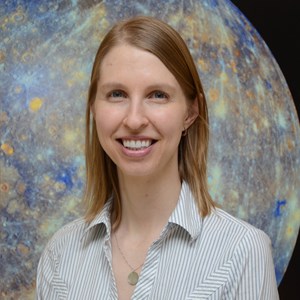
NASA Andrea Jones is a planetary geologist and education specialist with the Planetary Science Institute, based out of NASA’s Goddard Space Flight Center. She works with NASA planetary science missions and research teams, including the Lunar Reconnaissance Orbiter, and helps share their discoveries through education and public engagement programs. 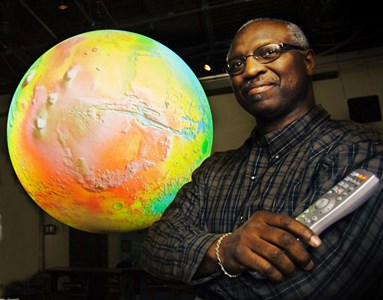
NASA Maurice A. Henderson has worked extensively with NASA on public outreach and science education. He is currently serving as the program manager for NASA’s support of the Science on a Sphere visualization platform, and the Hubble Space Telescope traveling exhibits based at NASA Goddard in Maryland. He works with developers at NOAA (National Oceanic and Atmospheric Administration), and with the NASA science community. 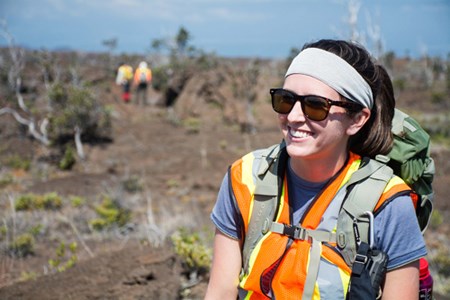
NASA Dr. Kelsey Young is an Exploration and Research Scientist at UTEP/Jacobs JETS Contract at NASA Johnson Space Center. She is a field geologist studying planetary analogs, or locations on Earth that resemble other planets. She also works with the human exploration community to help plan for the next generation of planetary surface exploration. 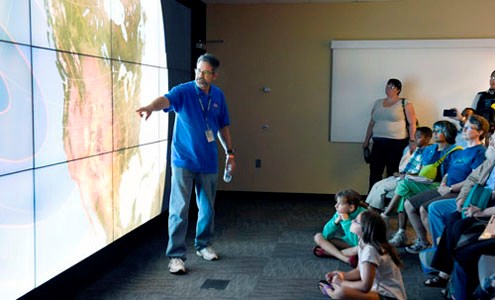
NASA Ernie Wright has been using computer graphics to visualize scientific data for over 25 years. Since 2008, he has worked as a programmer and animator at the Scientific Visualization Studio at NASA Goddard Space Flight Center in Greenbelt, Maryland. He works primarily with data from Lunar Reconnaissance Orbiter, a spacecraft that's been in orbit around the Moon since 2009. 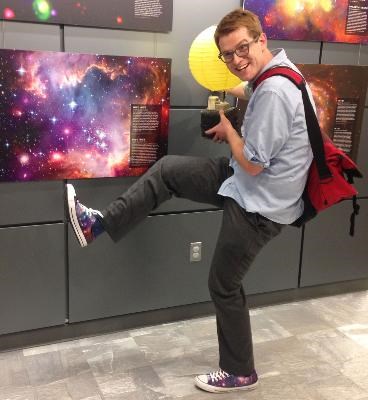
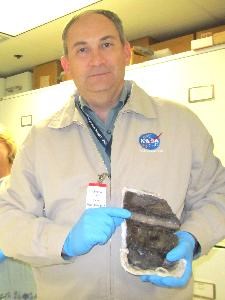
Planetary Science Division Science Mission Directorate NASA He then served for eight years as the Lead Program Executive for the Discovery Program of mid-class Solar System exploration missions. NASA’s NEO Observations program has discovered over 12,000 near-Earth asteroids and comets since Lindley became its manager, over 80% of the total known. Lindley has received NASA’s Exceptional Achievement Medal for his work on comet and asteroid missions. Asteroid 5905 (1989 CJ1) is named “Johnson” to recognize Lindley’s efforts in detecting Near Earth Objects. 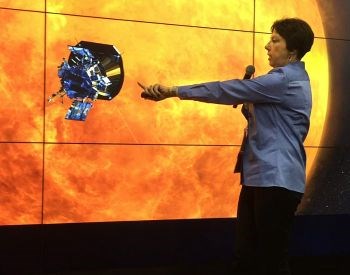
APL Dr. Nicola “Nicky” Fox joined the Johns Hopkins University Applied Physics Laboratory (APL) in 1998 as a research scientist where she studied various aspects of the geospace impact of coronal mass ejection events from the Sun. Since 2015, she has served as the Chief Scientist for Heliophysics in the Space Research Branch. She has extensive project and program science leadership experience and is project scientist for the Parker Solar Probe (PSP) where her main role is to ensure the scientific integrity of the mission. She represents the PSP science team in all aspects of the project, leads the Science Working Group activities and liaises with the mission engineering team and the NASA/Goddard and Headquarters program offices. Nicky also served as the Deputy Project Scientist for the Van Allen Probes mission. Prior to joining APL, Nicky was a USA National Research Council fellow at NASA Goddard Space Flight Center, receiving a number of NASA awards for outstanding performance. She earned a Ph.D. in physics from the Imperial College of Science, a master’s of science degree in telematics from the University of Surrey, and a bachelor’s degree in physics from the Imperial College of Science. 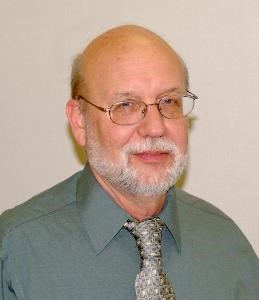
NASA Dr Ed Grayzeck is a planetary scientist from the Goddard Space Flight Center (GSFC). He recently retired as a government supervisor in the Solar System Exploration Data Services Office at GSFC. He headed the NASA Space Science Data Coordinated Archive and the Planetary Data System. He was previously assigned as a Program Scientist for the MEcury Surface, Space ENvironment. GEochemistry, and Ranging (MESSENGER) mission to Mercury, the Lunar Reconnaissance Orbiter (LRO) and the Lunar Atmosphere and Dust Environment Explorer (LADEE) missions to the Moon. His earlier research dealt with small bodies of the solar system, e.g., comets. He has asteroid 12517 named after him. Dr Grayzeck also has extensive background in Teaching and Public Outreach. He was a Professor at the University of Nevada Las Vegas and taught the full range of Physics courses and general Astronomy curriculum including laboratories with associated field trips, e.g., solar eclipse 1970 and 1979. As part of the University of Maryland faculty, he taught classes on the solar system for the advanced non-science majors. While at NASA, he led the Student Investigator and Challenge contests through the NASA Tournament Lab. 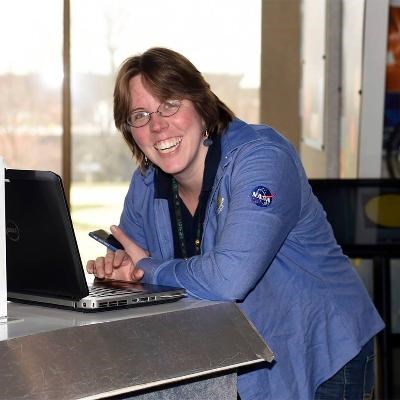
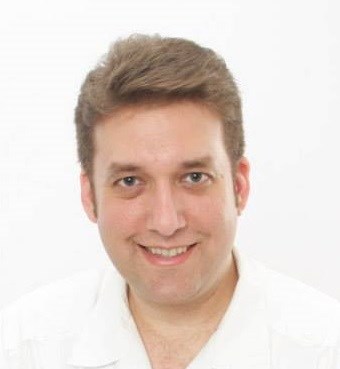
Dr. Méndez is an astronomer & education specialist at UC Berkeley’s Space Science Laboratory as well as an adjunct professor of physics at Diablo Valley College. Dr. Méndez works to educate and inspire others about the wonder and beauty of the Universe. He develops educational programs and resources for students, teachers, and the public; conducts professional development for science educators; and teaches college courses in astronomy and physics. He graduated from the University of Michigan in 1997 with degrees in Astronomy, Physics, and Music; and then continued his studies at the University of California at Berkeley, graduating in 2002 with a Ph.D. in Astrophysics. 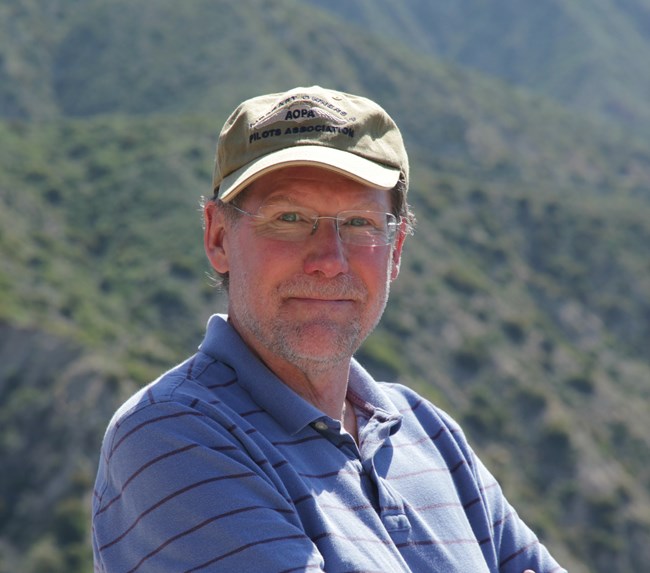
Frank O’Brien has lent his spaceflight history expertise to NASA for 25 years as a contributing editor for NASA’s Apollo Lunar Surface Journal and is co-editor the Apollo Flight Journal. His background on the lunar missions and computing led him to write a well-received book on the Apollo Guidance Computer. In 2011, Frank became a Solar System Ambassador for NASA’s Jet Propulsion Laboratory and lectures several times a month on a range of space topics. Frank has always been passionate about aviation, and was a pilot and aircraft owner for 25 years. |
Last updated: August 22, 2021
